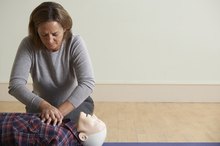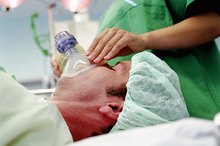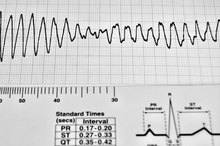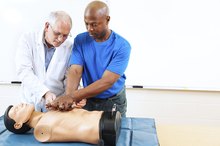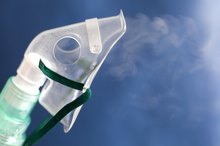What does fact checked mean?
At Healthfully, we strive to deliver objective content that is accurate and up-to-date. Our team periodically reviews articles in order to ensure content quality. The sources cited below consist of evidence from peer-reviewed journals, prominent medical organizations, academic associations, and government data.
The information contained on this site is for informational purposes only, and should not be used as a substitute for the advice of a professional health care provider. Please check with the appropriate physician regarding health questions and concerns. Although we strive to deliver accurate and up-to-date information, no guarantee to that effect is made.
Conditions That Must Exist Before Using CPR
Cardiopulmonary resuscitation, or CPR, is a series of steps designed to assist blood and oxygen circulation in someone who is not breathing and who has ineffective heart activity. CPR comprises chest compressions in which the rescuer pumps on the victim’s chest to facilitate blood circulation, and rescue breathing in which the rescuer provides the victim with breaths. Certain conditions warrant the need for CPR, which can save a life when initiated immediately.
Unresponsiveness
Medical events that precipitate the need for CPR, such as heart attack and stroke, can render victims unconscious and unresponsive. A person who has experienced circulatory or respiratory collapse can become unconscious due to lack of oxygen to the brain. A victim in this state will not respond to verbal or painful attempts to elicit a response, such as calling his name or pinching skin on the back of his hand.
No Breathing
CPR Vs. Rescue Breathing
Learn More
A person who is unresponsive and not breathing requires immediate CPR for the best chance of survival. Cessation of breathing means the brain, heart and other organs and body tissues are not receiving oxygen needed for survival. A rescuer should assess an unresponsive person for breathing by gently pressing back on the victim’s forehead to tilt the head slightly up. The mouth should be slightly opened, and a rescuer should watch the victim’s chest for movement, while listening and feeling for breath. The Mayo Clinic offers that the absence of oxygen to the brain can result in brain damage within a few minutes 1. If there are no signs of breathing, CPR should begin to hasten return of oxygen circulating to the brain and through the body.
- A person who is unresponsive and not breathing requires immediate CPR for the best chance of survival.
- If there are no signs of breathing, CPR should begin to hasten return of oxygen circulating to the brain and through the body.
Ineffective Pulse
The heart must pump at regular, steady intervals to effectively circulate blood throughout the body. If the heart experiences an interrupted rhythm, such as during cardiac arrest, pumping ability is reduced and circulation can stop. Medical personnel will provide CPR to victims who have a very low pulse or ineffective heart rhythm inconsistent with circulation. The American Heart Association states that lay rescuers should not feel for a pulse on an unconscious, unresponsive victim, but they should initiate CPR immediately until medical help arrives, or until the patient regains consciousness 2.
- The heart must pump at regular, steady intervals to effectively circulate blood throughout the body.
- The American Heart Association states that lay rescuers should not feel for a pulse on an unconscious, unresponsive victim, but they should initiate CPR immediately until medical help arrives, or until the patient regains consciousness 2.
Related Articles
References
Writer Bio
Elizabeth Otto has been writing professionally since 2003. She is a licensed emergency medical technician-intermediate with over 10 years of experience in the field. She has worked as a clinical assistant in family health and emergency medicine since 1995. Otto is a freelance writer for various websites and holds an Associate of Science in medical assisting from Commonwealth College.
